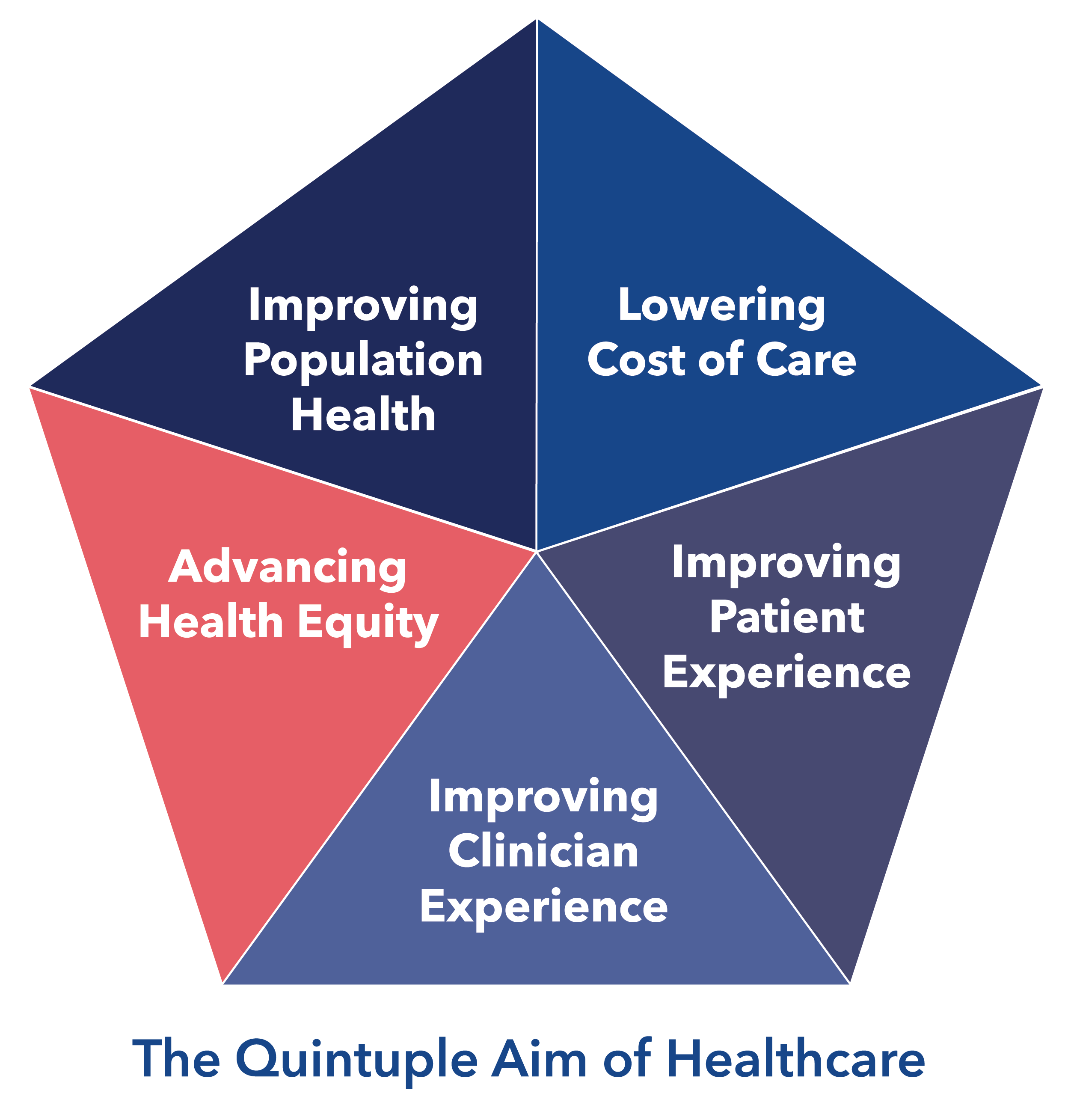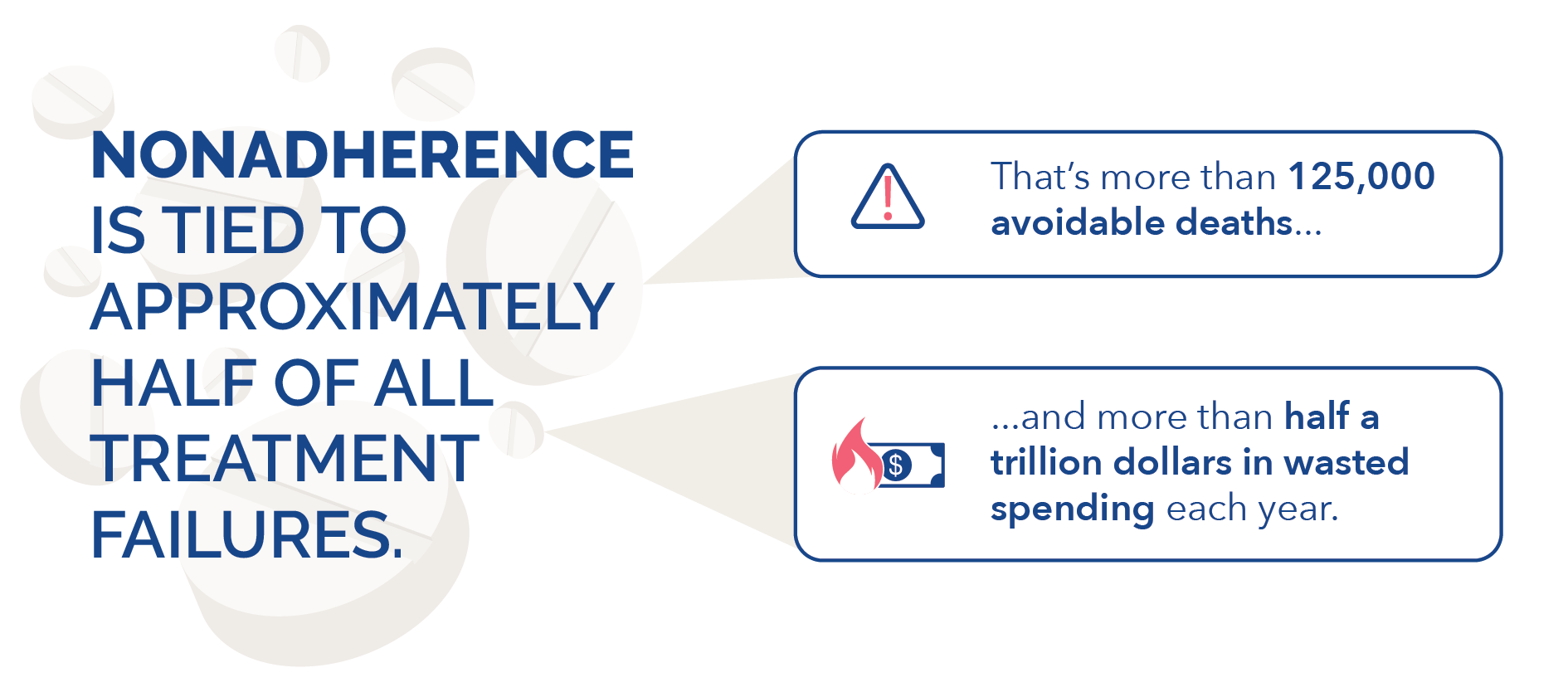- Center on Health Equity & Access
- Clinical
- Health Care Cost
- Health Care Delivery
- Insurance
- Policy
- Technology
- Value-Based Care
Contributor: The Quintuple Aim: How Medication Adherence Can Be a Lever for Improved Health Equity
Medicare Advantage health plans can become more equitable and value driven by addressing common socioeconomic barriers in medication adherence.
The Triple Aim of Healthcare has become a guiding principle of systemic reform since its introduction in 2008. It includes 3 main pillars: better outcomes, lower costs, and improved experiences for patients. These goals are designed to foster an environment where patients have access to the personalized, proactive, and preventive care they need to live their best lives without excessive spending.
Over time, the Triple Aim expanded into the Quadruple Aim, which adds the pillar of improved provider experiences in an effort to combat the widespread burnout and staffing shortages that make it challenging to achieve the other items on the list.
Last year, after the COVID-19 pandemic taught us more about what it really takes to create the efficient, cost-effective, person-centered health care system of the future, a fifth pillar, health equity, was added to create the Quintuple Aim of Healthcare.

CMS Follows Suit, Inserting Heath Equity Index into Star Ratings
This new focus on health equity was quickly embraced by CMS. On April 5, 2023, CMS issued a Final Rule establishing the creation of a Health Equity Index (HEI) measure, weaving health equity into the fabric of the Medicare Advantage (MA) Star Ratings formulas that link back to earning crucial Quality Bonus Payment (QBP) incentives. MA plans will need to closely examine the social risk factors (SRFs) of their members and then take coordinated, proactive actions to address the social determinants of health (SDOH) that contribute to worsened health outcomes and experiences.
The HEI score will measure performance years 2024 and 2025, leading to the first rating in 2027. Initially, plans will be scrutinized on how they provide care for MA Part C and Part D members in 3 SRF categories (members with low-income subsidies, dual eligibility, and disabled status). Performance buckets will be divided into thirds, with plans in the top third on a given measure rated 1 point (included measures are due to be announced annually). Plans in the middle third will get 0 points, while those in the bottom bracket will get –1 point. CMS will then aggregate the scores across included measures to create a weighted overall score, which will be applied to the Star Ratings calculations. Plans must have a total score greater than 0 to qualify for any QBP incentive. Performing well on the HEI measure is imperative to MA plans’ ability to provide health care benefits that improve health outcomes and patient experiences, but also to continue providing robust, valuable benefits that are attractive to health plan members.
What is Health Equity?
Health equity has become an increasingly familiar term, but it’s important for health plans to be clear on exactly what the term means. CMS defines health equity as “the attainment of the highest level of health for all people, where everyone has a fair and just opportunity to attain their optimal health regardless of race, ethnicity, disability, sexual orientation, gender identity, socioeconomic status, geography, preferred language, or other factors that affect access to care and health outcomes.”
To this end, the health care system continues to have its work cut out for it. Disparities in access and outcomes are common, with BIPOC (Black, Indigenous, People of Color) communities bearing disproportionate burdens of disease that contribute to poor quality of life and dramatically shortened lifespans. Poor medication adherence is a prime culprit in these often avoidable outcomes. Nonadherence is tied to approximately half of all treatment failures, more than 125,000 avoidable deaths and more than half a trillion dollars in wasted spending each year.

And because communities with greater socioeconomic challenges are significantly less likely to access their medications, remain adherent, and achieve positive health outcomes, solving for medication adherence will go a long way toward narrowing persistent health equity gaps, while simultaneously meeting the other objectives of the Quintuple Aim of Healthcare.
Mapping medication adherence to the goals of the Quintuple Aim
Appropriate medication adherence is an indicator that other health-related activities are on track. If a person is meeting recommended medication adherence thresholds by having access to their prescriptions at least 80% of the time, it typically means they are able to access care, afford and acquire their medications, and understand the process and importance of taking them as recommended.
In fact, improved medication adherence can be mapped back directly to each component of the Quintuple Aim:
Better outcomes for patients—Study after study, both domestic and international, have tied appropriate medication adherence to better clinical outcomes for patients and health plan members. For example, some studies have shown that patients who were adherent to their antihypertensive medications were 30% to 45% more likely to achieve blood pressure control compared with those who did not take their medications as prescribed.
Reduced spending for the health care system—Better adherence leads to fewer health complications, which leads to lower spending on emergency department care, hospitalizations, and specialty care. In a recent study of low-income people with 1 chronic condition, such as diabetes, patients with the lowest adherence (less than 25% of days covered) had $3152/year higher Medicare costs than patients with 95% or more days covered. A similar pattern held true for people with multiple chronic conditions.
Better experiences for patients—Fewer health emergencies and lower costs from improved adherence typically translate to more positive experiences for patients and their loved ones. For MA plans, the success of these efforts is often reflected in the CAHPS survey, one of the key “force multipliers” for higher Star Ratings.
Better experiences for health care providers—The availability of current, accurate patient data that’s beneficial to identify SDOH barriers and resolve member medication nonadherence in an actionable clinical workflow is also key to improving provider experience. Health care providers otherwise have a lack of accurate and timely data, which can lead to job frustration or make effective treatment much more difficult.
With improvements to available data, providers gain access to key information that can help reduce the likelihood of job dissatisfaction and burnout, helping avoid clinical shortages and reduced patient safety.
Improved health equity—A coordinated effort to improve medication adherence, particularly among communities with greater socioeconomic challenges, could help close the gaps in experiences and outcomes in these populations. Poor health outcomes and chronic disease development are markedly more prevalent in Black, Latinx/Hispanic, and American Indian/Alaskan Native (AIAN) populations, and these groups also tend to experience lower incomes and more limited economic opportunities, reduced access to care, and lower health literacy rates.
Ensuring access to medications for these populations and providing the socioeconomic support necessary to foster sustained adherence to recommended care plans could significantly decrease health disparities and improve outcomes for entire communities.
Medication adherence as a fulcrum for achieving the Quintuple Aim
A coordinated effort to improve medication adherence, particularly among communities with greater socioeconomic challenges, could help close the gaps in experiences and health outcomes in these populations. Health plans are in a unique position to affect change in this area—and they have strong incentives to take action on behalf of their members.
Star Ratings measures tied to medication adherence are triple weighted, and high performance on the CAHPS member satisfaction survey is directly correlated not only to how many Stars a plan can earn, but also to member attrition rates over time.
By successfully leveraging proven strategies to zero in on medication adherence, plans can improve their performance on the HEI measure, increase their odds of crossing the crucial 4.0-Star threshold that unlocks significant QBP incentive opportunities, and attracts members shopping for the best possible care.
By taking the lead in addressing the root causes of medication adherence, many of which lie in common socioeconomic barriers, MA health plans can take action on the move to a more equitable, value-driven health care system while concurrently achieving their own goals and longevity.

